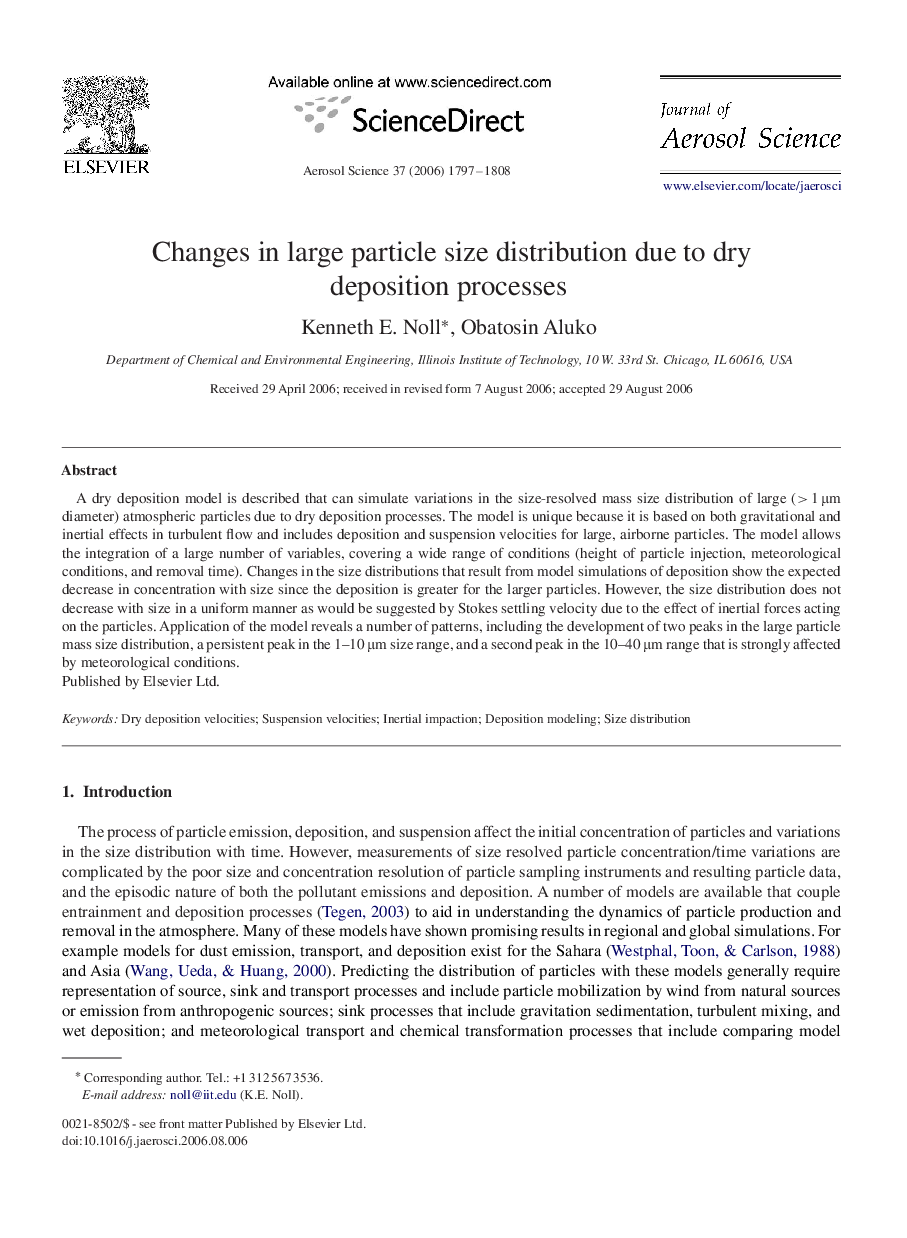| Article ID | Journal | Published Year | Pages | File Type |
|---|---|---|---|---|
| 4453370 | Journal of Aerosol Science | 2006 | 12 Pages |
A dry deposition model is described that can simulate variations in the size-resolved mass size distribution of large (>1μm diameter) atmospheric particles due to dry deposition processes. The model is unique because it is based on both gravitational and inertial effects in turbulent flow and includes deposition and suspension velocities for large, airborne particles. The model allows the integration of a large number of variables, covering a wide range of conditions (height of particle injection, meteorological conditions, and removal time). Changes in the size distributions that result from model simulations of deposition show the expected decrease in concentration with size since the deposition is greater for the larger particles. However, the size distribution does not decrease with size in a uniform manner as would be suggested by Stokes settling velocity due to the effect of inertial forces acting on the particles. Application of the model reveals a number of patterns, including the development of two peaks in the large particle mass size distribution, a persistent peak in the 1–10μm size range, and a second peak in the 10–40μm range that is strongly affected by meteorological conditions.
